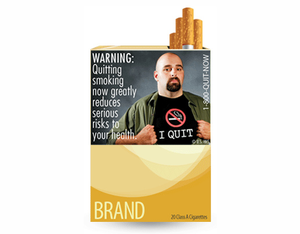
A district court judge invents strict scrutiny requirement for commercial speech.
Under Supreme Court doctrine, regulators have more latitude to impose disclosure requirements on corporations than they do to suppress their speech. In a bizarre opinion this week, Judge Richard Leon of the D.C. district court misapplied First Amendment law to strike down a regulation of the Food and Drug Administration (FDA) that would require graphic warning labels on cigarette packages and advertisements.
Judge Leon applied strict scrutiny to the warning labels, meaning that the FDA had to show that its rule was “narrowly tailored to achieve a compelling government interest.” He applied this standard because the warning labels are “compelled speech” of not simply “purely factual and uncontroversial information.” The court said that if the mandated disclosure had been only of factual and uncontroversial information, then it would have been subjected only to the reasonable relationship test set out in the Supreme Court’s Zauderer decision.
This misunderstands what triggers the various levels of scrutiny of free speech restrictions. The usual First Amendment test for restrictions on commercial free speech is set out in the Supreme Court’s Central Hudson decision. Under Central Hudson, commercial speech receives intermediate scrutiny, or less protection than that provided to pure speech.
In Zauderer, the Supreme Court provided even less protection to businesses in connection with disclosure requirements than it usually provides to commercial speech. It required only that the “disclosure requirements are reasonably related to the State’s interest.” The Court explained that
We reject appellant’s contention that we subject disclosure requirements to a strict ‘least restrictive means’ analysis under which they must be struck down if there are other means by which the State’s purposes may be served. Although we have subjected outright prohibitions on speech to such analysis, all of our discussions of restraints on commercial speech have recommended disclosure requirements as one of the acceptable less restrictive alternatives to actual suppression of speech.
The courts have regularly held that mandating disclosure is a less burdensome imposition on commercial speech than placing prohibitions on such speech. For example, in a decision in which the D.C. district court held that the FDA was placing too many restrictions on drug manufacturers’ speech about non-approved uses of their products, it explained that “[t]his determination is based in large part upon the fact that there exist less-burdensome alternatives to this restriction on commercial speech. . . . The most obvious is full, complete, and unambiguous disclosure by the manufacturer.”
Judge Leon argued that, unlike in Zauderer, the FDA warning labels required more than disclosure of “purely factual and uncontroversial information” and therefore should be subjected to strict scrutiny. There are several problems with this argument.
First, the Zauderer Court did use the “purely factual and uncontroversial information” language once when describing the disclosure mandated in that case, but its reasoning encompassed disclosure requirements in general: it explained that “disclosure requirements trench much more narrowly on an advertiser’s interest than do flat prohibitions on speech.”
Second, the FDA’s warning labels are of “purely factual and uncontroversial information.” The labels require warnings that smoking cigarettes is harmful, a well-established scientific fact. Judge Leon found that the warning labels are not purely factual because they are “graphic images . . . crafted to evoke a strong emotional response calculated to provoke the viewer to quit or never start smoking.” This logic requires believing that facts cannot evoke emotions.
The court also found that other elements of the warning labels serve as government advocacy, rather than to increase consumer awareness. For example, it found that images of an autopsy and “a man exhaling cigarette smoke through a tracheotomy hole in his throat” do not convey the usual consequences of smoking or other “factual information supported by evidence about the actual health consequences of smoking.” However, the court did not find any basis for not believing that harm depicted in the photos resulted from smoking tobacco, nor provided any basis for holding that some minimum number of people have to suffer from such consequences for the warning labels to be factual, rather than simply advocacy.
Finally, even if the reasonable relationship test in Zauderer does not apply to the FDA’s cigarette warnings, the warnings still would only constitute a burden on commercial speech, and thus would be subjected to the intermediate scrutiny test of Central Hudson.
There is no basis whatsoever for imposing strict scrutiny on the FDA’s cigarette warning labels.




